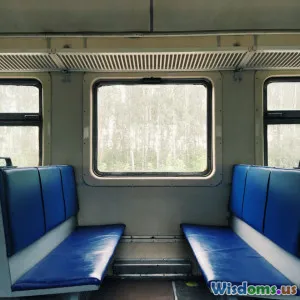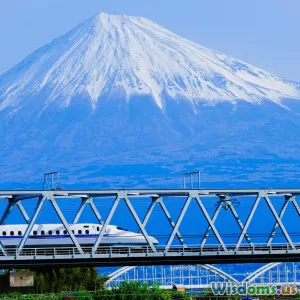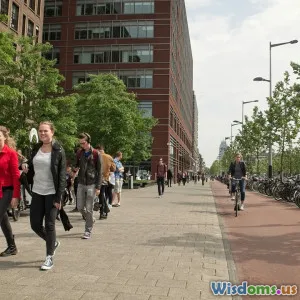
Why Train Journeys in Europe Still Outshine Budget Flights in 2024
8 min read Discover why Europe's train journeys in 2024 offer unmatched experiences, convenience, and eco-benefits over budget flights. (0 Reviews)
Why Train Journeys in Europe Still Outshine Budget Flights in 2024
Europe's transportation landscape in 2024 reveals an intriguing trend: despite the proliferation of budget airlines, train journeys continue to captivate travelers seeking more than just the quickest route. While ultra-low-cost flights offer tantalizing headlines for cheap fares, subtle yet powerful factors make train travel an enduring favorite—especially among those with a taste for comfort, sustainability, and immersive experiences.
Introduction: More Than Just A Ride
Imagine weaving through Europe's heartlands as sunrises paint the landscapes beyond your window—charming villages, rolling vineyards, and medieval towns blurring into vibrant cityscapes. This isn’t a fantasy but the reality of train travel across Europe in 2024. From the iconic TGV slicing through France to the sleek ICE trains traversing Germany, railways connect travelers to destinations with a unique blend of efficiency and charm that budget flights struggle to match.
Convenience: The Journey Starts In The City Center
A decisive factor in favor of trains is location convenience. Airports are commonly located far from city centers. For example, London's Heathrow is about 24 kilometers west of central London, necessitating additional transit time and costs. Conversely, major train stations like London’s St Pancras or Paris’s Gare du Nord are centrally located, often minutes from the heart of the city.
Streamlined Check-Ins and Boarding
Unlike the increasingly strict and lengthy security checks at budget airports, European train stations generally offer minimal barriers to boarding. Passengers typically arrive just 20-30 minutes before departure, whereas budget flight passengers often need to arrive 1.5 to 2 hours early.
Frequency and Flexibility
Train services offer relatively frequent departures. For example, the ICE trains between Berlin and Munich run multiple times a day, providing travelers with flexibility often missing in budget airline timetables. This frequency mitigates the impact of missed connections and allows spontaneous itinerary adjustments.
Comfort and Experience: Traveling Becomes Part of The Adventure
Budget airlines notoriously compromise passenger comfort to keep costs low—tight seating, limited legroom, and negligible amenities. Train journeys in Europe, by contrast, offer:
- Generous seat spacing: Eurostar and Railjet trains often provide more legroom and wider seats than the average budget plane seat.
- Onboard facilities: Dining cars, spacious restrooms, and free Wi-Fi enhance comfort on longer journeys.
- The Ability to Move Freely: Passengers can walk around, stretch, or socialize.
Moreover, the scenic vistas train travel provides—such as the Rhine Valley between Koblenz and Mainz or the alpine passes on the Bernina Express—turn transportation time into a cherished memory.
Sustainability: A Growing Priority for 2024 Travelers
Environmental impact is no longer an afterthought; it actively shapes travel decisions in 2024. According to a European Environment Agency report, train journeys emit up to 90% less CO2 per passenger compared to flights.
This is amplified by European initiatives such as the EU's "Sustainable and Smart Mobility Strategy," promoting rail expansion and modernization to reduce carbon footprints. Travelers conscious of climate change often prefer trains to align their journeys with eco-friendly values.
Example: The Rise of Night Trains
Europe has witnessed the resurrection and growth of night train services—like the ÖBB Nightjet—offering a sustainable alternative to short-haul flights by combining rest and transit. The Austrian launch of new routes in 2024 exemplifies how trains do not just serve commuters but evolve with travelers' environmental and experiential aspirations.
Affordability Reconsidered: The True Cost Beyond Ticket Price
While budget airlines tempt with remarkably low fares, several hidden expenses imply that the total cost gap isn't always as wide as it appears.
Extra Costs in Budget Flights
- Baggage fees: Budget airlines charge for checked bags and often for carry-ons, inflating costs.
- Airport transfers: Getting to and from distant airports can require costly taxis or express trains.
- Delays and cancellations: Budget airlines are often plagued with delays, with limited compensation.
Cost-Effective Rail Passes
European rail passes such as the Eurail Pass or country-specific travel cards offer bulk pricing options that can dramatically reduce per-journey expenses. These passes enable roaming across multiple countries without fluctuating flight prices.
For example, a Eurail Global Pass allowing five travel days within one month costs about €284, enabling multiple trips between major cities that would outprice several short-haul flights.
Real-World Insights: Voices From The Track
Travel blogger Amelia Prescott shares, "On several occasions, my train journey from Amsterdam to Paris was not just stress-free but inspiring. Unlike cramped flights, the train allowed me to relax and even finish work en route, turning transit into productive time."
Transport economist Dr. Stefan Muller states, "European rail networks have invested heavily in infrastructure and technology, improving speed and connection quality. This evolution enables trains to compete realistically with air travel, especially as airports face congestion and security delays."
Conclusion: The Renaissance of Rail Travel in 2024
Despite budget flights grabbing headlines with rock-bottom ticket prices, European train journeys maintain a competitive edge by offering a holistic travel experience. They combine city center convenience, superior comfort, environmental responsibility, and frequently competitive pricing—making them not just transportation, but a valued part of the European travel experience.
As Europe pursues greener and more traveler-friendly transport alternatives, the train’s rhythmic journey and panoramic windows continue to enchant those in search of more than just the destination but a meaningful, idiomatic travel story. Whether a seasoned traveler or a first-time explorer, opting for Europe's railways in 2024 means choosing journey quality alongside connectivity, sustainability, and peace of mind.
Inspired to choose the scenic and sustainable route? Next trip to Europe might just be worth planning around the train schedule instead of airport timetables.
Rate the Post
User Reviews
Popular Posts





















